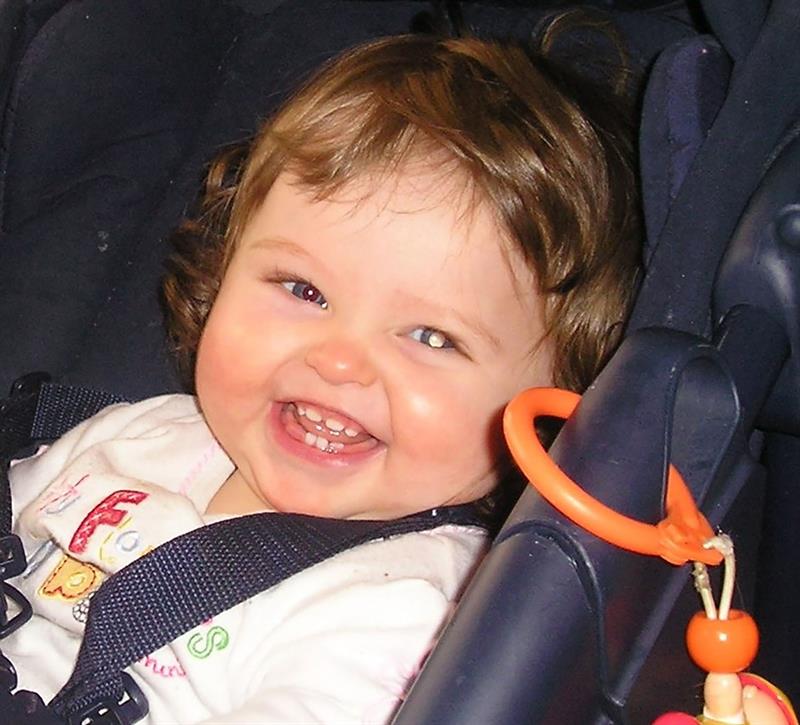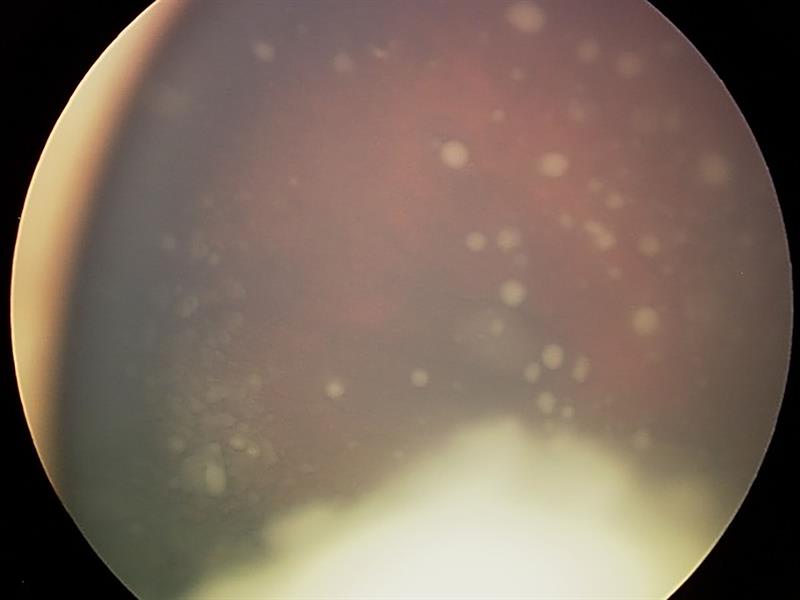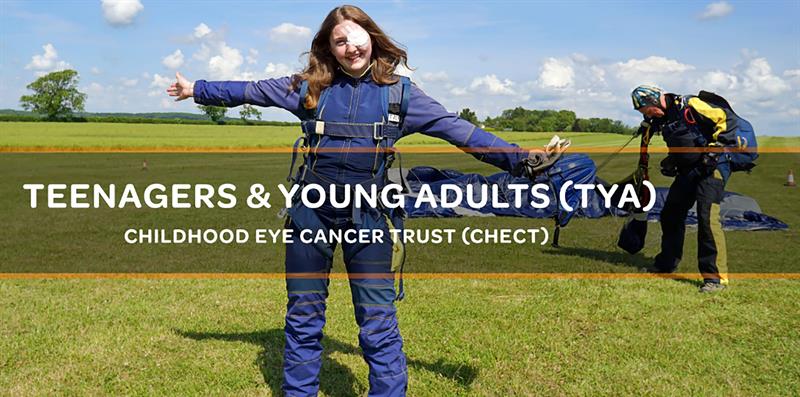
The International Day of Women & Girls in Science took place on February 11 this year and, to mark the occasion, the Childhood Eye Cancer Trust (CHECT) got in touch to tell me about a recent competition entry from a postgraduate studying the impact of retinoblastoma.
Retinoblastoma
Although very rare, retinoblastoma (Rb) is still the most common primary malignant intraocular tumour of childhood, and the second most common of all ages. It accounts for 3% of all childhood cancers and is incident in 1:15,000-20,000 live births. Between 40 and 50 cases are diagnosed each year in the UK; in effect, one child every week. There is no gender or race predisposition and either or both eyes may be affected.
In about two thirds of children, only one eye is affected, but in one third tumours develop in both eyes. In some children who only have one eye affected at diagnosis, particularly those who are very young, it is possible for a tumour to develop in the second eye several weeks or even months after the diagnosis of retinoblastoma in the first eye.
Retinoblastoma occurs in two forms:
- Heritable (germline)
- Non-heritable (somatic)
Children with bilateral disease or multiple tumours in one eye have the heritable retinoblastoma, with a change in the Rb gene. This accounts for around 45% of cases. The heritable form can occur with no prior family history of Rb (sporadic).

The two most common signs are leukocoria (as pictured) and strabismus. Rb is responsible for half of all cases of leukocoria and 60% of all Rb cases have leukocoria as their first presenting sign and around 25% of all children diagnosed with Rb have strabismus as a presenting sign.
Key indications for Rb are as follows:
- Leukocoria; white pupillary reflex noticed, sometimes intermittently, in dim lighting or a photo. It can be difficult for parents to describe
- Strabismus; Retinoblastoma must be ruled out for all new cases of strabismus in babies and children using a red reflex test
- Heterochromia; a change in the colour of one iris or part of the iris
- Inflammation, redness or increased pressure in or around the eye without an infection.
- Absence of red reflex when doing a red reflex test.
- Deterioration of vision in one or both eyes.
- Nystagmus
- Parental history of retinoblastoma; the condition is heritable so children of an affected parent with retinoblastoma must be screened from birth
As always, clinicians should trust the patient and listen to any parental concerns about vision or eye appearance in their child.
If an infant or child presents to the optometrist with a sign or indication of retinoblastoma, a red reflex test and ophthalmoscopy must be performed (figure 2, pictured below). When retinoblastoma is suspected or if the test shows anything unusual, urgent referral needs to be made to a local ophthalmology department stating the cause for concern. If the local ophthalmology department identifies or suspects retinoblastoma, an urgent referral is made to one of two retinoblastoma hospitals in the UK.

Advances in treatment and, essentially, speedier referral have led to improvements in management, with greater survival rates and a much more conservative approach to treatment with fewer enucleations. A comprehensive review of the management of retinoblastoma will appear in a future issue of Optician.
The Childhood Eye Cancer Trust (CHECT)
CHECT was first established way back in 1984 and was originally called FISH; Family Information and Self Help. The group was later registered as a charity and called The Retinoblastoma Society and became a company limited by guarantee in 1987. In 2004, the charity changed its name to the Childhood Eye Cancer Trust (or CHECT) and has now grown to boast 10 members of staff and offer a broad range of services, support and educational materials.
The three core aims stated by CHECT are of support, awareness and research have remained constant and continue to form the bedrock of our work. We also added influencing to the list in order to bring about improvements to services for people with Rb.
Research
A good example of how CHECT is providing one of its key aims is through the sponsorship of research projects. To mark the International Day of Women & Girls in Science, CHECT has announced the rollout of a new project. Postgraduate Nicola O’Donnell (figure 3) is currently completing a CHECT-funded PhD, at York University as part of their Epidemiology and Cancer Statistics Group, which will ultimately lead to new support resources being developed to help young people who have had Rb transition to adulthood.
The focus on diagnosis and treatment, essential as this is, all too often means the experiences of the patient and their families are ignored. For this reason, Nicola’s project is very much focused on gaining insights into the impact Rb has upon the individual.
As she explained, ‘My PhD project is focused on developing resources to support teenagers and young adults who have had Rb. Essentially, this means I am interested in hearing from young people how having had Rb might have impacted them as individuals growing up in terms of their psychological and social needs; identity, forming friendships and relationships, self-confidence and so on. I am passionate about working with teenagers and young adults to hear about their experiences.’
Each year, the University of York runs its YorkTalks competition, which challenges PhD candidates to articulate their research to a non-specialist audience through an interactive exhibition using a variety of mediums. Nicola explained: ‘Myself and an amazing small group of individuals and parents of children who have had retinoblastoma came up with an interactive installation as part of the competition. This guided the public through the experience of retinoblastoma by asking the audience to look at photos of children prior to diagnosis to explore what symptoms they can see, listen to a children’s cancer doctor talking to parents about next steps after a diagnosis and experience the intensity of people constantly looking in your eyes.
‘We also came up with the ideas of walking through a ‘sea of thoughts’ about what it is like to be a teenager who had retinoblastoma, trying on visual impairment simulation glasses and trying to do an everyday task, watching a video about individual and parents’ experiences living through a retinoblastoma diagnosis, treatment, and beyond and finally by sharing experiences of cancer.’ More on this in next week’s issue.
Eye care Practitioner e-Learning
In liaison with Vision Express, the CHECT has developed online training resource for both professional and non-professional staff. This may be accessed at chect.org.uk/resources-2/optician/opticians-e-learning-moduleopticians-e-learning-module.
Online Resources
Readers should be aware of the excellent website provided by CHECT, which contains a wealth of resources and information for both practitioner and patient: chect.org.uk.

CHECT has also launched a new site aimed at supporting young people with Rb and their families and contains a wealth of information, network opportunities and personal stories. The teenagers and young adults website can be accessed at chect-tya.co.uk.
- If you know of a teenager or young adult in the UK who has had retinoblastoma and would like to get involved in the development of new psychological support tools, tell them to contact Nicola at nrv503@york.ac.uk.
